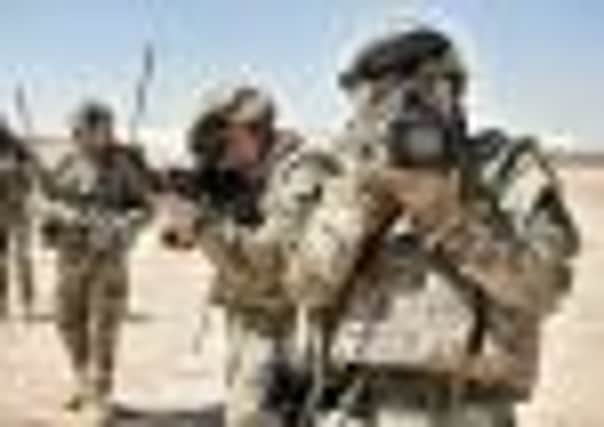Life on the front line captured by camera soldiers


A then teenage Mark Nesbit had recently been given an SLR Minolta-5000 camera by his parents, and took it on the trip with his classmates from Woodhouse Grove Boarding School, Apperley Bridge, capturing as much as he could of Soviet life in 1988.
Now 40 and a father of two, Sgt Nesbit, of Horsforth, near Leeds, is still taking pictures.
Advertisement
Hide AdAdvertisement
Hide AdHe is one of 35 Royal Logistics Corps British Army photographers working in Afghanistan to capture images of the conflict to be used as part of a permanent record of the conflict stored in the London archives of the Imperial War Museum.
Sgt Nesbit’s work includes going out on patrol and operations with soldiers around Helmand Province, and taking pictures ranging from raids on improvised explosive device (IED) factories to drawing out insurgent ambushes.
While he still has his old SLR Minolta-5000, in Afghanistan he works in Combat Camera Teams of three, using specialist digital and video cameras alongside their ordinary weapons.
It is a role that was first developed by the Army in the Second World War to help win the fight against Nazi propaganda. And in the current battle for hearts and minds in Helmand, Sgt Nesbit’s role is seen as important as ever.
Advertisement
Hide AdAdvertisement
Hide Ad“In this conflict in particular, the boundaries have become blurred, you have medics, engineers and dog handlers all on the front line,” said Sgt Nesbit, who joined the Royal Military Police in 1996 and served with them for seven years before applying to become a Royal Logistics Corps photographer.
“The photographers are soldiers who come from all different backgrounds and ultimately, we are soldiers first.
“I have been lucky, although it has happened a few times where photographers have to open fire.
“The way I look at it is there are guys you are out with whose job it is to do that, my job is to capture it all and let people know what our soldiers are getting up to.
“As a photographer you can be very restricted.
Advertisement
Hide AdAdvertisement
Hide Ad“The present situation at the moment is the IED threat. As soon as you leave any secure compound, it is a risk that you are going to face an IED.
“It is always in the back of your mind, we all think about it.
“It is not really an adrenaline rush, or anything like that, because they are there all the time. When you go out and take those first steps it is not worth worrying about any more.
“We have had quite a few near misses.”
Sgt Nesbit’s father worked in the Army as a vehicle engineer and he was one of a number of military children to be sent to Woodhouse Grove school.
Advertisement
Hide AdAdvertisement
Hide AdHe is now planning to send his 10-year-old son to the same school.
“I never wanted to join the Army to be honest,” he said.
“When I finished school I turned down the opportunity to go to university because I wanted to start working.
“I wasn’t really an academic person and wanted to get my hands dirty instead.
“It was only after a few years of employment that I started to get fed up of it. I was working in a factory and I thought I need to do something here.
Advertisement
Hide AdAdvertisement
Hide Ad“I joined the Army because I wanted to get myself out of a situation I had got myself into and I have never regretted it.”
“My family are very proud of me doing this job, I think it is the best one in the Army.
“My dad is extremely proud as well. He has started up a camera club in his local village in Wiltshire where he lives now and he has asked me to go and give a talk there.”
RLC photographers in the UK, operating as part of Army News Teams, could be expected to cover anything from a Royal visit to a training exercise.
Advertisement
Hide AdAdvertisement
Hide AdOn operations, however, Combat Camera Teams are embedded with troops on the frontline. They produce an estimated three million still photographs every year for the Ministry of Defence (MoD), one third of which are selected for permanent preservation by the Imperial War Museum.Many images are also widely distributed to the media and for internal use.
Hilary Roberts, head curator of the Imperial War Museum’s photographic archive, said: “Afghanistan is a very difficult conflict to photograph and because of the IEDs it is not always clear who you are fighting.
“Everything that the British army photographers capture film and video is designated as a public record. There is a close working relationship with Combat Camera Teams.
“Because of the danger involved working in Afghanistan for any photographer, the work of the Combat Camera Teams is absolutely crucial in improving our understanding of this war.”